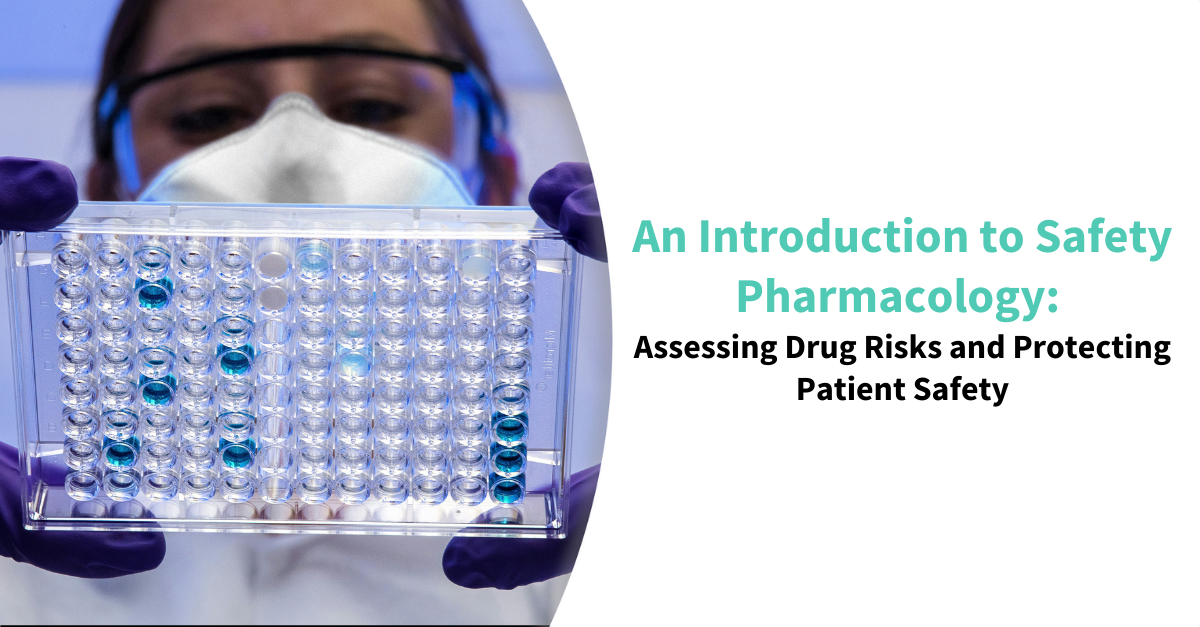
Before a drug can enter clinical trials in humans, it must undergo rigorous safety evaluations to assess its potential risks. This includes identifying not only mild adverse effects, such as headaches or dizziness, but also identifying or predicting life threatening toxicities that may arise.
Safety pharmacology studies the potential severe effects of drug candidates on human physiological systems, forming a critical component of the Drug Discovery and Drug Development process. This field evaluates the risk of fatal adverse effects associated with a compound or drug candidate, ensuring the safety profile is identified and characterized before the clinical application. Additionally, although severe adverse reactions may be rare, understanding their likelihood is essential to assess the overall risk if the drug.
Evolution and Milestones in Safety Pharmacology
Safety pharmacology emerged in the 1990s as a discipline following the establishment of the International Conference on Harmonisation (ICH), which initiated a conjoined effort between scientist and regulatory authorities to develop standardized guidelines for evaluating drug safety and identifying hazardous effects in humans. These efforts resulted in the current ICH S7A and S7B guidelines, which outline the regulatory framework for studying the safety profile of pharmaceutical compounds.
In the past, pharmaceutical companies occasionally used lead containing compounds in the Drug Development processes. At the time, the toxic effects of lead on human health were not full understood, and regulatory standards to guide safe practices in Drug Development were lacking.
Today, pharmaceutical companies developing new drug candidates must comply with stringent regulatory requirements established by the European Medicines Agency (EMA) or, in the United States, the Food and Drug Administration (FDA), before progressing to clinical trials and subsequent market approval.
A drug may be approved and considered safe if it does not exhibit adverse effects during preclinical and early clinical trials; however, certain adverse effects may only emerge after the drug has been administered to a larger population. For this reason, pharmacovigilance and post marketing surveillance is required.
Although adverse reactions to a drug may be rare, they must be disclosed on medical packaging. In earlier periods of drug evaluation, such declarations were not mandated, and the potential risks of compounds to human health were often unpredictable. As a result, some drugs were only withdrawn from the market after adverse effects were observed in the population.
What is the Difference Between Safety and Toxicity?
Safety pharmacology and toxicity studies serve distinct but complementary roles in drug development. Safety pharmacology is governed by regulations requiring comprehensive evaluation of a drug's potential to cause life-threatening effects in humans, specifically assessing its impact on critical systems such as the central nervous, respiratory, and cardiovascular systems. In contrast, toxicity studies primarily examine the initial effects of a drug, often focusing on dose-dependent adverse reactions without the same depth of investigation into systemic and potentially lethal risks.
Severe adverse effects can compromise essential physiological functions, leading to potential failures in hepatic, renal, gastrointestinal, or other organ systems. To ensure patient safety, any identified risks should be thoroughly investigated and documented within the framework of drug development, contributing to a well-rounded understanding of the drug’s safety profile.
When is Safety Pharmacology Used?
Safety pharmacology is applied during the preclinical phase of drug Development and Discovery, prior to testing in humans in clinical trials. This stage uses in vivo models—typically involving species such as mice, rats, pigs, or primates. However, as discussed below, zebrafish have emerged as a valuable New Alternative Model (NAM) in safety assessment.
The primary objective of safety pharmacology is to determine whether a drug candidate is suitable for human testing by carefully weighing the risks and benefits associated with its progression. This includes evaluating the drug's potential to advance through the stages of development and ultimately achieve market approval.
For a drug to enter clinical trials, it must first receive regulatory approval, confirming its safety for human testing. If any uncertainties arise, regulatory authorities may request additional data to ensure a comprehensive safety profile. Progression to clinical trials cannot occur without this regulatory clearance.
When a drug contains novel compounds with no prior human use, the regulatory approval process typically requires more time and resources, as such drugs are more likely to exhibit unpredictable adverse effects. Conversely, compounds with an established safety profile in humans can often expedite the approval process.
The Benefits of Zebrafish in Safety Pharmacology
Zebrafish offer a versatile and alternative approach for predicting adverse reactions to pharmaceutical compounds. Their rapid development and cost-effectiveness make zebrafish an ideal model for in vivo drug screening, streamlining early Drug Development and Discovery while supporting the principles of replacement, reduction, and refinement in animal research (the 3Rs). Zebrafish are also highly comparable to humans in terms of biological composition, sharing up to 82% of human disease-associated genes, which enhances their relevance for safety assessments.
Improving efficiency in early-stage Drug Development increases the likelihood of a drug progressing to final approval, benefiting both patients and the pharmaceutical industry by reducing time-to-market and resources required and enabling more reliable safety predictions.
Sources
European Medicines Agency: ICH Topic S 7 A Safety Pharmacology Studies for Human Pharmaceuticals
Redfern, W.S., Wakefield, I.D., Prior, H., Pollard, C.E., Hammond, T.G. and Valentin, J.-P. (2002), Safety pharmacology – a progressive approach. Fundamental & Clinical Ph
Pugsley, M. K., Authier, S., & Curtis, M. J. (2008). Principles of safety pharmacology. British journal of pharmacology, 154(7), 1382–1399.https://doi.org/10.1038/bjp.2008.280


